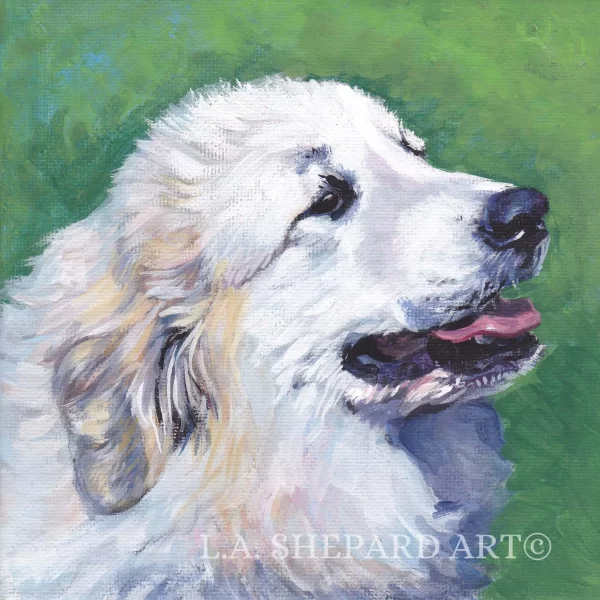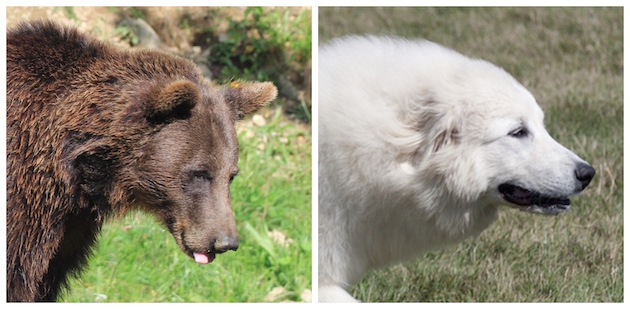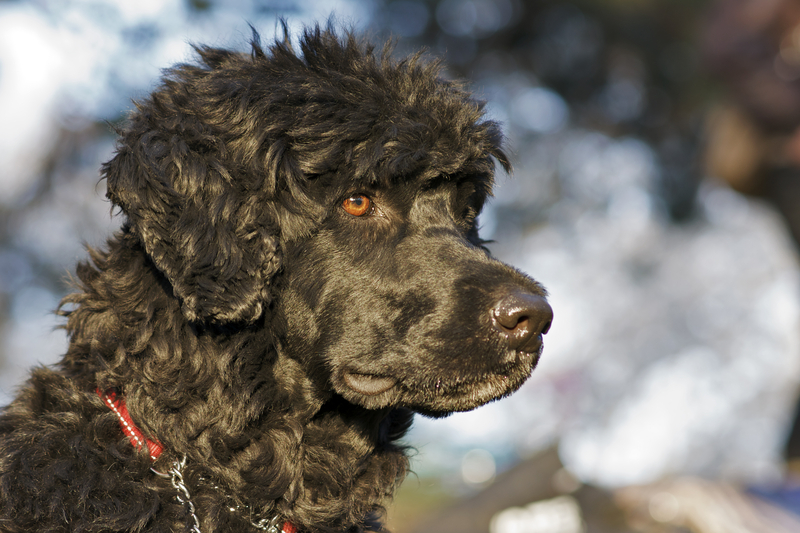
The Pyrenees Mountain Range straddling the border of France and Spain stretches some 280 miles between the Atlantic Ocean and the Mediterranean Sea, and brown bears have always lived there. We don’t want to get sidetracked by the difficulties the bear has suffered there in the 20th century —— that situation can be read here. We only mention the bears because they help illustrate a point we’ve made on these pages before: Many of the terms used colloquially or found in breed standards can be traced to familiar aspects of life for the people who have lived with their breeds.
The standard for the delightful Irish Water Spaniel, for example, includes the color “puce liver,” puce coming from the French, “une puce,” for “flea-colored” (and yes, some fleas are this color). The ancient Chinese had many ways of describing the Shar-Pei based on things they knew, including a tail like an iron wire, a “roof tile mouth,” “hippopotamus head,” “toad mouth,” “Warrior Scowl,” and “calabash-shaped head.” And then there is the French Bulldog whose ear is described as a “bat ear,” while the Border Terrier has an “otter head.”
You get the idea.
The French described the ideal head for the Great Pyrenees as resembling the head of the Pyrenean bear. This is to say that like the brown bear, a Great Pyrenees should have very little stop between his head and his muzzle.

Great Pyrenees photo by © Alain Lauga/ Dreamstime; Pyrenean Bear by nocidar Adobe Stock photo
In fact, the Great Pyrenees’ AKC breed standard includes a statement that has puzzled newcomers to the breed since 1933 when the original American standard was written: “There is no apparent stop.” In essence, the line describes a muzzle that slopes up gently from tip of the dog’s nose to the point where it joins the top of her backskull. There is a point between the eyes where the two planes of the head and muzzle come together, but it isn’t abrupt, it isn’t sharp, and it certainly isn’t like the head of a Portuguese Water Dog seen below in which the stop is well defined:

Portuguese Water Dog by © Manon Ringuette/ dreamstime
As the Pyr’s Illustrated Standard writes, “The key to understanding the phrase “no apparent stop” is the word “apparent.” Certainly there is a point of the two parts joining, but it is so subtle as not to be apparent.
The head is an important aspect of any breed because it impacts type, but in the section on heads in the Great Pyr’s breed standard, the first line reads: “Correct head and expression are essential to the breed.” Expression is important in this breed because it is so special. Again, we refer to the Illustrated Guide which states: “The ‘correct Pyrenean eye’ gives the dog its unique expression. It is a far-away, almost dreamy look that says, ‘I have everything under control’ — a very intelligent, regal, relaxed look.” Too much rear skull above eye level, and/or too much rounding of the dome give the impression of a heavy head with and the undesired excess of stop, and neither gives a Great Pyrenees the elegant majesty for which the breed is known, let alone that “far away” expression.
When gazing upon this breed, remember the Pyrenean Bear if in doubt about a correct stop.
Image: “Great Pyrenees” by LA Shepherd
www.facebook.com/L.A.ShepardArt
http://fineartamerica.com/profiles/lee-ann-shepard.html
www.etsy.com/shop/TheDogLover
